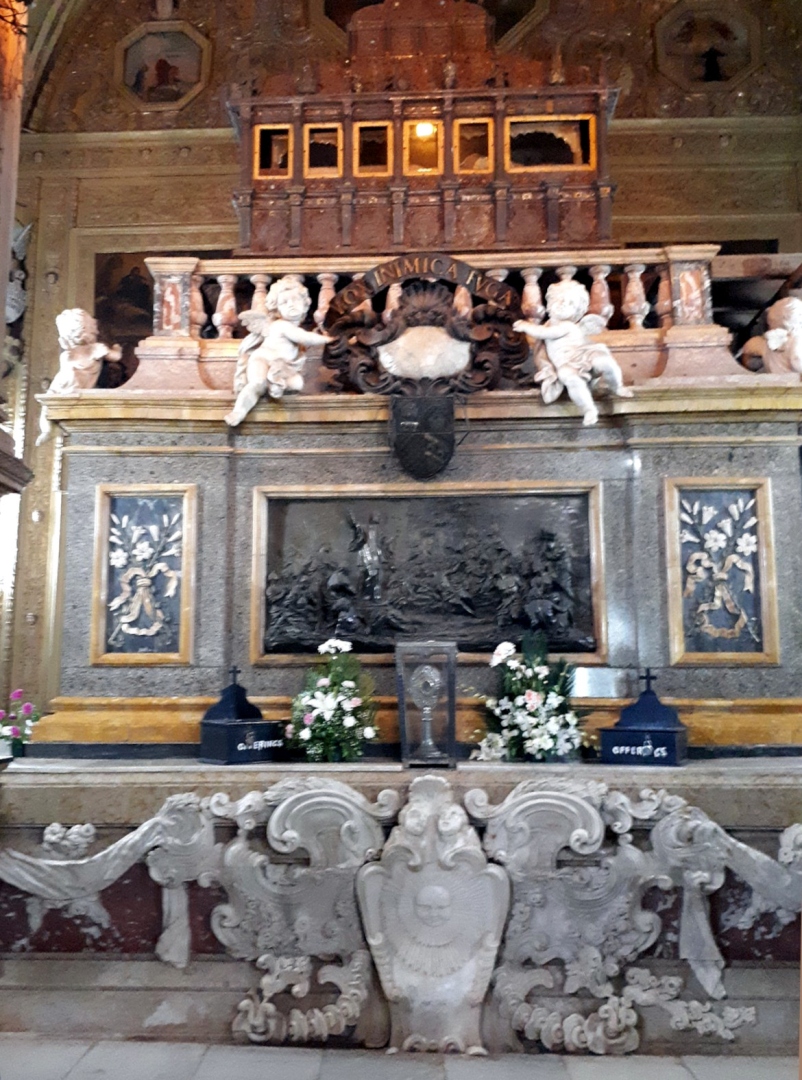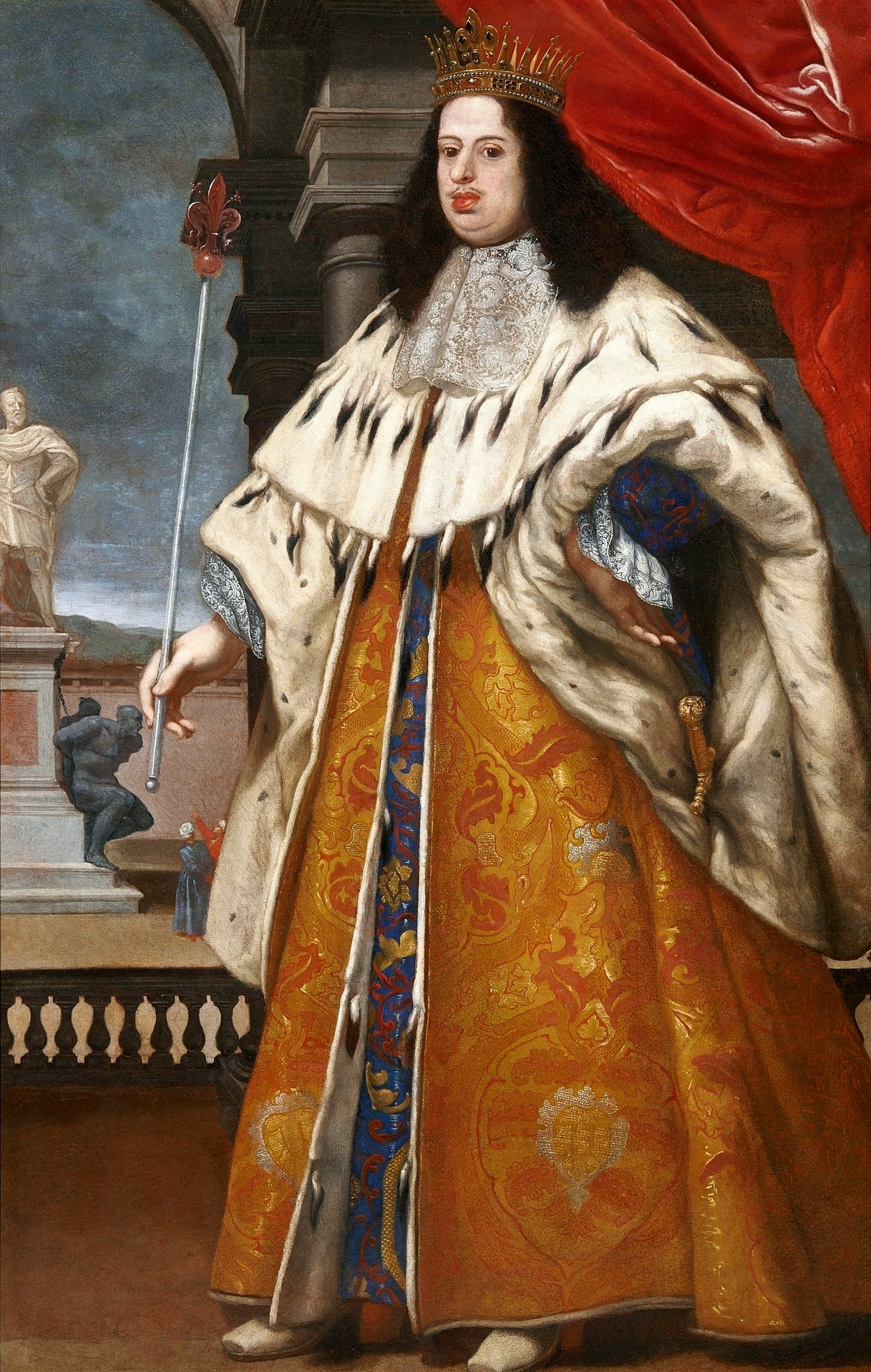The Medici family gave the Pope who founded the Diocese of Goa and the Grand Duke who gave the marble base of the mausoleum of St Francis Xavier

The Mausoleum of St. Francis Xavier at the Bom Jesus Basilica in Old Goa.
St Francis Xavier, Goencho Saib of the Goan Catholics, not only brought great spiritual significance to the soil of Goa but also great artistic significance.
According to the historian, Jose Nicolau Da Fonseca (1837–1886), with the exception of the far-famed Taj Mahal erected at Agra by the emperor Shah Jahán, there is no other mausoleum in India, or even in Asia, which can equal it in grandeur and magnificence to the mausoleum of St Francis Xavier at Bom Jesus Basilica.
The magnificent marble base of this mausoleum was made possible by the gift from Cosimo III de' Medici (August 14, 1642 – October 31, 1723), who was the Grand Duke of Tuscany, Italy from 1670 until his death in 1723. October 31 marks the memorial of 300 years of his death.
Cosimo III de' Medici descended from the House of Medici which gave four Popes to the Catholic Church. Indeed, it was Pope Clement VII (born Giulio de' Medici) who founded the Diocese of Goa in 1533.
Cosimo III had a particular devotion to St Francis Xavier, and had been in contact with the Goan Jesuits. The procurator general for the Jesuit province in Goa, Father Francesco Sarmento, personally delivered a relic of the saint, the pillow upon which Xavier's head had rested in his casket, to Cosimo. In gratitude, the Grand Duke commissioned the marble base.
This was created under the direction of his court artist Giovanni Battista Foggini. Note must be made here that he is the same artist who designed the tomb of the father of modern science - Galileo Galilei.
Begun in 1689, the monument was completed in five years and it was then assembled and displayed in the Cappella dei Principi in Florence for two years. Then it was dismantled and shipped to Goa, via Lisbon, in sixty-five crates.
It reached Goa after a year of travel and was unpacked in the Basilica of Bom Jesus in October/November 1698. Two Florentine craftsmen were sent to erect the tomb base, Placido Ramponi (1672-1755) and Simone Fanciullacci.
 Cosimo III, the Medicean grand duke, in Grand Ducal regalia by Baldassare Franceschini. Source: Wikimedia Commons
Cosimo III, the Medicean grand duke, in Grand Ducal regalia by Baldassare Franceschini. Source: Wikimedia Commons
The decorative art technique of the marble tomb base of St Francis Xavier was known as pietre dure. Interestingly, the same technique was also used in Taj Mahal. Researcher Alison C. Fleming mentions that it represents a specific connection between the two continents.
The whole marble base is composed of three tiers of multicolored marble. The rectangular base is made of bardiglio and red jasper. The uppermost section is laid with red jasper and the large middle section is made of granite. Marble reliefs of angels adorn these sections.
There are four bronze reliefs which illustrates scenes from the life of Francis Xavier. Italian art historian, Filippo Baldinucci, once described them as "the best work which this artist ever executed."
The reliefs depict four themes: Xavier preaching to the people of Molucca; baptising; protecting the Hindu kingdom of Travancore by driving away the attacking Bagadas in Kottar (Kanyakumari district) and death of the saint on Sancian Island.
The original line of Medicis died out in 1743. However, the cadet branches of Ottajano and Verona survive still today. It is right to remember the Medici family which gave the Pope who founded the Diocese of Goa as well as the Grand Duke who gave the marble base of the mausoleum of Goencho Saib.
Through this legacy, the Basilica of Bom Jesus makes Goa not just a site of Indo-Portuguese relations but also of Indo-Italian relations. This is again a gift from St Francis Xavier, the beloved Goencho Saib of the Goan Catholics.